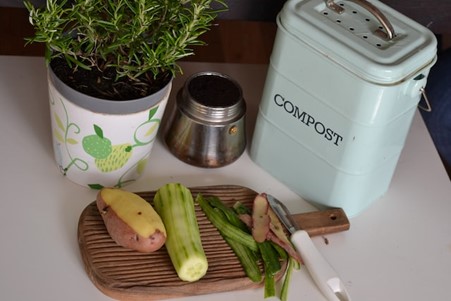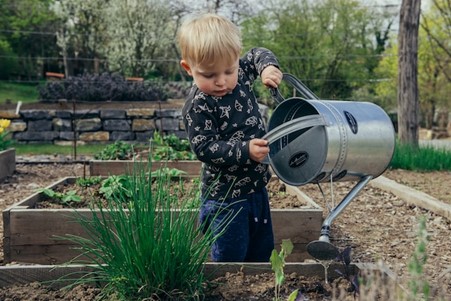Manna Ko is an entrepreneur, author, and avid gardener. She is passionate about animals, the earth. and creating a cleaner, happier place for future generations. Manna inspires to one day open Manna’s Happy Ranch and Farm, surrounding herself with a variety of animals, gardens, and sustainable agriculture.
In the following article, Manna discusses the benefits of sustainable farming and gardening, what it takes to grow food in an ecological way, and how doing so will create a better world for future generations.
Not only is gardening a great way to grow your own food, teach children an invaluable skill, and take up a new hobby, but it’s a great way to have a positive environmental impact on the planet. Gardening in a sustainable fashion will garner all of the benefits that ordinary gardening will but doing so sustainably will actually provide positive effects to the environment itself.
Manna Ko explains that these sustainable gardens are impacting climate change and reducing its effects by easing carbon emissions that can be associated with traditional gardening and, on a larger scale, farming.
Sustainable Gardening & Farming Explained
Manna Ko says the idea behind sustainability is to leave something better than you found it so that it can be utilized by future generations. In particular, when referring to natural resources, sustainability is the reduction of consuming in a way that prevents resource shortages for the future.
Though there isn’t a concrete “official” definition of sustainable gardening, per se, it generally involves using organic gardening principles, which do not cause any negative side effects to the planet and actually reverse these effects in order to end up creating a negative carbon footprint.
Manna Ko says that organic gardening principles aren’t set in stone, but the United States Department of Agriculture does have certain rules set in place for farming products to be labeled as USDA Organic:
- Land must be free of prohibited substances (pesticides) for 3+ years
- Soil must be fertilized by mechanical methods, animal/crop waste, or specific synthetic applications
- Weeds, diseases, and pests need to be mitigated using biological methods, if this doesn’t work then an approved synthetic substance can be substituted
- Organic seeds must be used
- Genetic (GMO) engineering is not allowed
Keep in mind that these are the guidelines for organic gardening on a larger scale. Nonetheless, these principles do go hand in hand, which is why it is good to know about both large-scale farming aspects, as well as smaller, home gardens.
Manna Ko says that it is relatively easy to enjoy sustainable, organic gardening while helping the environment as a whole at the same time.
How To Grow Food Sustainably
Manna Ko says that there is a multitude of techniques that the grower can take to ensure that food is grown in a sustainable manner. Using renewable resources, ensuring that the soil is good quality, and even growing native-to-the-area plants are all ways to promote a sustainable garden plot.
Water Conservation
Manna Ko explains that the ability to conserve water is paramount when it comes to sustainable gardening. Drip irrigation systems are a great way to conserve water while still ensuring the vegetable garden receives ample moisture explains Manna Ko.
Water conservation can be compounded by using a variety of soil additives that will help absorb the moisture instead of repelling it. Manna Ko details some additives include:
- Sphagnum peat moss
- Coca coir
- Wood chips
- Straw
- Manure
- Compost
- Vermiculite
- Perlite
Creating a mixture of several of these additives, especially peat moss, perlite and compost will naturally hold moisture while adding much needed nutrients to the ground, which in turn demands less watering.

Composting
Manna Ko says that composting has a multitude of benefits, and everyone should consider composting to reduce waste and reuse these organic materials. Compost is key to adding organic material into the soil, promoting growth of microorganisms, nutritious soil, and plant growth.
Composting can be done by the average small-scale gardener, homesteader, or those in urban developments. If space allows, composting can be done in a series of 3×3 (or larger) containers, or even on a countertop!
The best way to get the most out of your compost is by mixing various organic materials together to ensure the highest biodiversity of microorganisms in the soil, guaranteeing that your vegetables will thrive on what they love.
Choosing The Correct Plants Based Upon Your Climate
Different vegetables are going to grow better depending on your local climate, so it’s imperative that you choose the right plants for the right area. This is also referred to as native planting. The best way to determine which plants will thrive in your area, is by utilizing the USDA hardiness zone map.
This map divides the country into 13 separate planting zones based on climate, altitude, and bodies of water. By utilizing the USDA hardiness zones, farmers, and gardeners alike can choose plants and crops that will grow best in their area based on climate conditions.
Final Thoughts
Not everyone who has an affection for gardening realizes that they can help save the planet while doing something that they already know how to do and love. Implementing practices such as water conservation and composting are great ways to reduce our carbon footprint all the while growing delicious vegetables that are great for eating.








